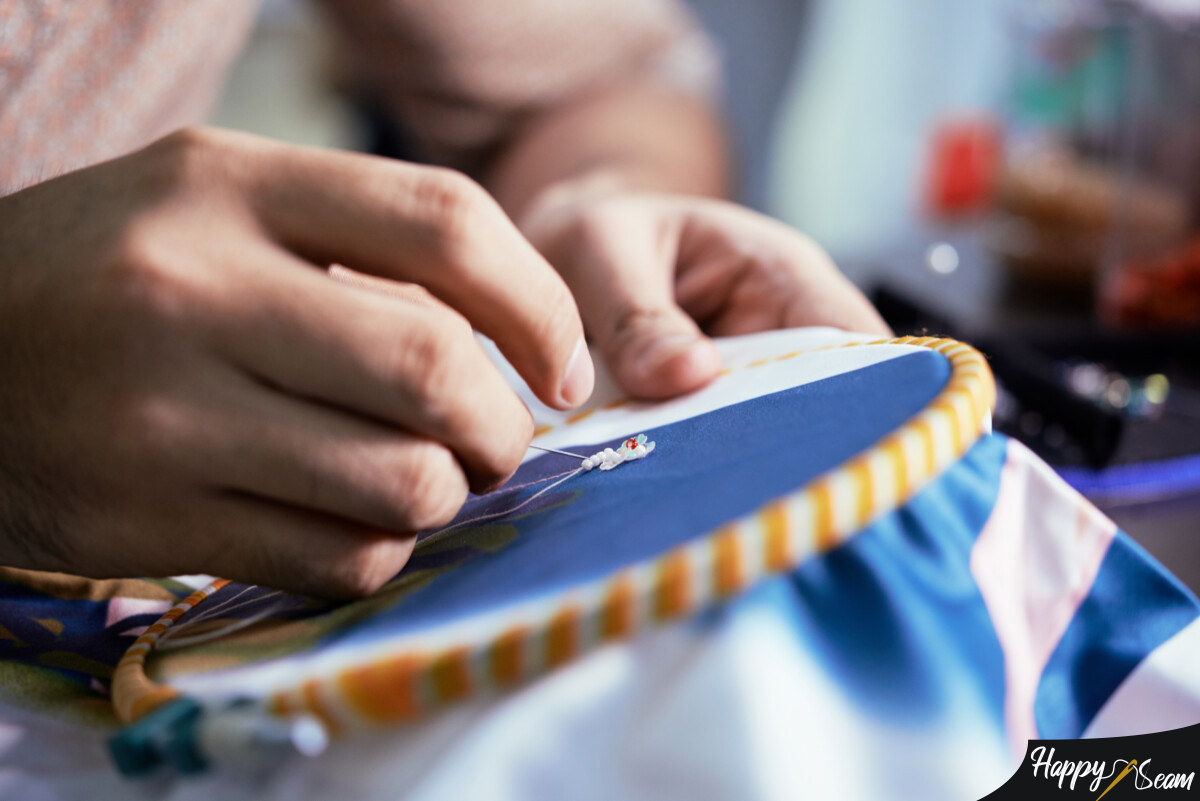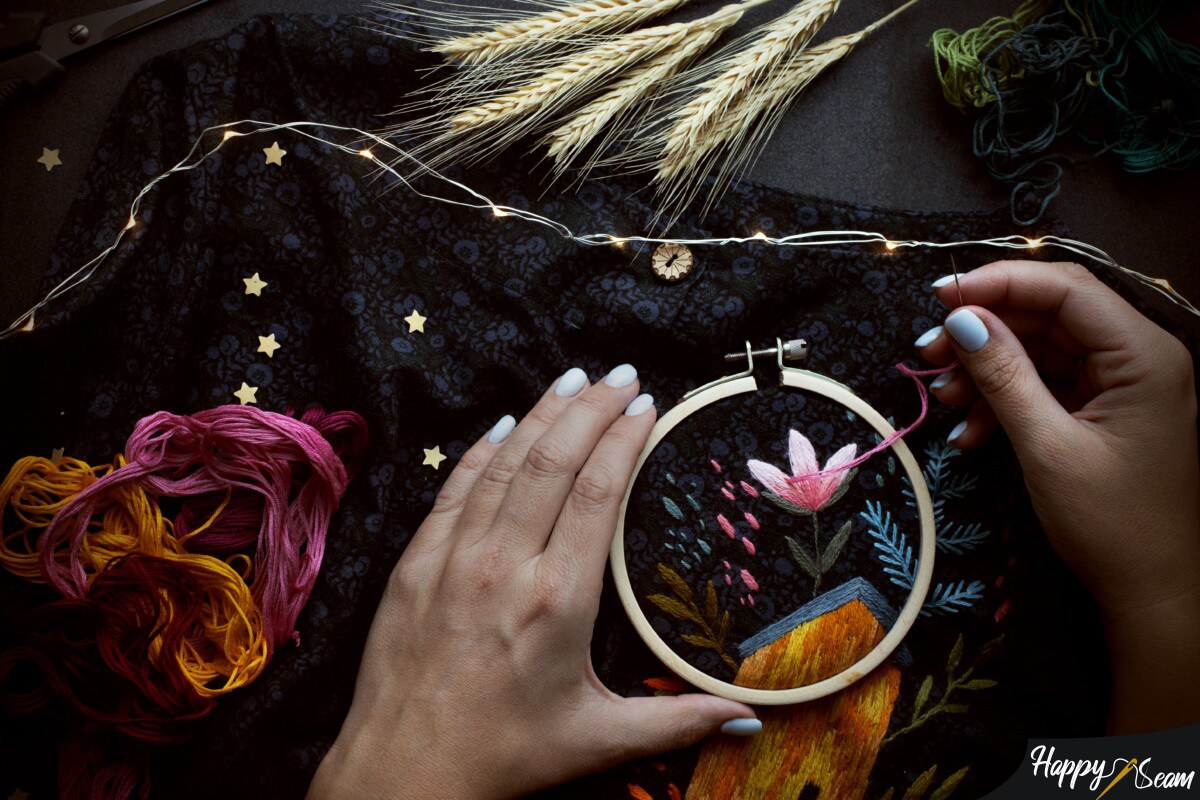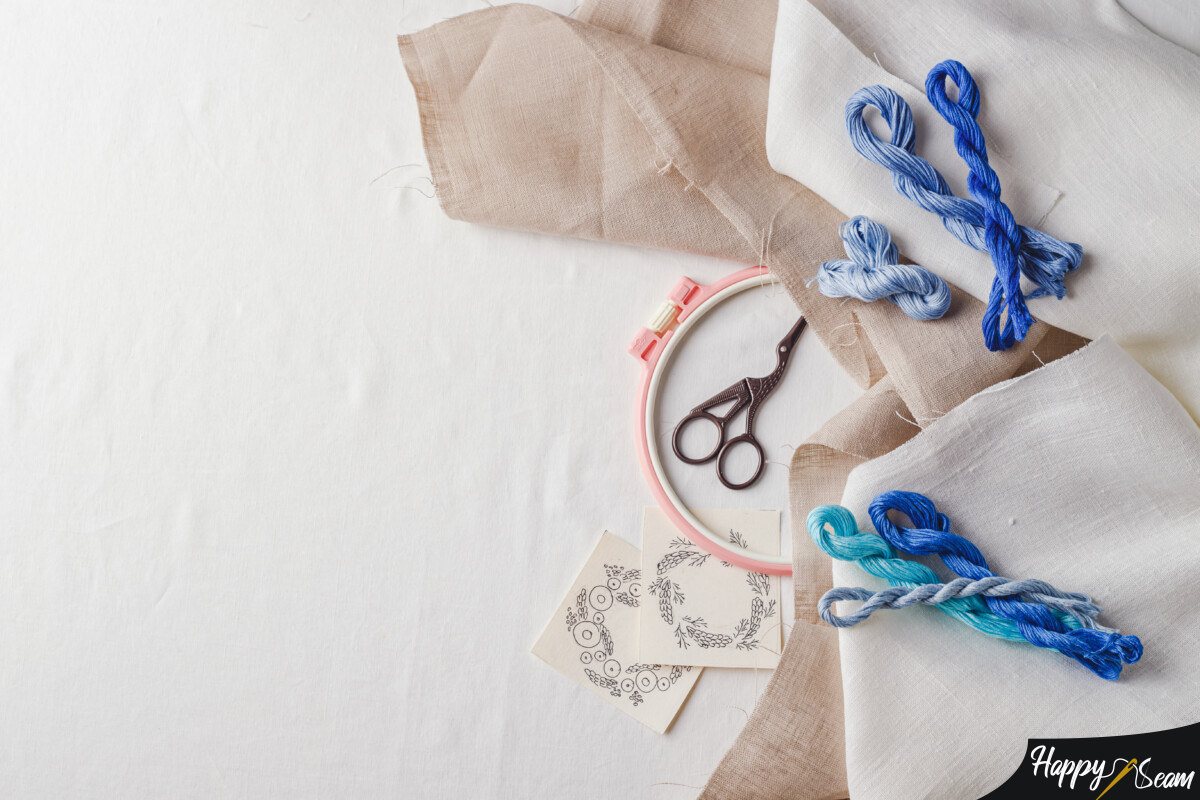Do you have an item of clothing with a clean cut, that compliments your body in a way that other clothes rarely do, but there’s that patch or embroidery that was in style when you first bought the item, and now it’s just plain and outdated?
Or maybe you might have made a mistake when embroidering. We’ve all been there. But that doesn’t mean you have to get rid of that item, shirt, hoodie, hat, or whatever kind of clothing it is.
Key Takeaways
- Embroidery is a form of art and a skill worth mastering.
- When removing embroidery always work on the nonvisible part of the item
- To remove embroidery there are a couple of tools like a razor, a couple of scissors, a seam ripper, a Peggy stitch eraser, or a hair trimming machine.
- Magnifying glass will help you see closer and detach embroidery without ruining the fabric.
- Tweezers will help pull the threads out easily
So how can we remove the embroidery?

There are a couple of tools you can use to remove the embroidery, such as razors or scissors. If you have to deal with a lot of embroideries and remove it, there are more professional tools to use, which are pretty easy to use, and will efficiently and quickly get the job done.
Always remember to work on the inside part of the item, you can perform the action even on the outside part too but at your own expense since you can accidentally ruin the visual aspect of the item, so all in all it’s trickier.
Read The Finest Oil For Sewing Machines
But what exactly is embroidery?
For those who are not exactly clear on what embroidery is, embroidery is a unique kind of art and skill to master, that has been among us for generations.
It is performed on a piece of clothing, decorative fabric, and so on. Needles, threads, and different techniques of sewing are used to achieve the specific desired look.
Solutions: What You Can Use

To remove embroidery you should cut or get rid of the threads that keep it attached to the fabric. You should look to see how that specific embroidery is interknitted, find its science of thought, and the rest of it works at the same pace. There are a couple of ways to do that and keep on reading to find out.
Razor
A razor is at the top of the list, the most available tool for almost everyone, and one of the cheapest ways.
In this case, you should always take extra care when dealing with sharp objects such as razors. You can use this method on the out or inside of the item. when dealing on the outside you should carefully look for the threads of the embroidery.
Run the razor carefully so as to not damage the fabric underneath it. The same technique goes when you deal with embroidery on the inside of the item always carefully run the razor to not damage the item. A couple of regular tweezers might help you pluck the threads out, but don’t pluck roughly since that might also damage the fabric
Scissors
Either regular scissors or thread clippers if you own a pair, are tools that can be useful to your situation. Flip the item inside out, and cut through the threads.
With patience and no rush added it’s an achievable mission. You might notice that tweezers will help you, either way, you decide to remove the embroidery.
Seam ripper
A seam ripper is used among all tailors and professionals in this occupation. This tool will help you achieve your destination faster than the scissors, but it is still a patience challenger, remember to be calm and go through it slowly.
Use the tweezers to pull the threads out carefully. And always remember to flip the item inside out, the purpose of this act is to not damage the visible part of the clothing or fabric.
You can also get a magnifying glass so you’ll have an easier time seeing how the threads are interknitted in the fabric. I find that tape will also help a lot pick up the leftovers that tweezers could not clean, or as an alternative to tape you can use a lint roller.
Peggy stitch eraser
For all of you in the audience who deal with embroidery more often than others, you might find yourself removing a lot of embroideries. I suggest you invest in a tool that will make your life way easier.
That tool is called a Peggy stitch eraser. It looks like a hair-trimming machine, and it does the work in the easiest and fastest way possible, after all, it is designed especially for that purpose.
Hair trimming machine
An alternative to a Peggy stitch remover is a hair-trimming machine. Grab your hair-trimming machine and carefully damage the threads but always keep in mind to be careful about the fabric, and always work on the non-visible part. And again a magnifying glass and tweezers will help you out in this process a lot.
Read A Bunch Of Different Types of Tank Tops
How to deal with holes that embroidery leaves?

As I mentioned embroidery is performed by a needle and some threads of choice. You must push the needle through the fabric, which causes the fabric and its fibers to break up and damage enough so that when you remove the embroidery it might still be visible.
That of course depends on the kind of material you are working on as well just ah on the work and patience you are putting into removing those unwanted threads.
A way to deal with those small but noticeable holes is to use your fingertips and sort of push together the fibers of the fabric, even some tweezers might come in handy for you. Also, make sure you iron the fabric well after you remove the embroidery.
If it doesn’t work the first time, try pushing the fibers together to go back to their place. But unfortunately, not all materials behave the same so some materials might even no longer go back to their original interknitted ways, such as polyester and similar behaving materials.
Read The Finest Embroidery Machine Thread
Final words
With all things considered any method whatsoever works. I found each method helpful, in different periods of time. Some are easy everyday used items, some are more professional which might be a faster and easier tool to use. I hope they are just as helpful to each one of you out there looking for solutions, as they were to me.
Sewing is definitely one of my biggest hobbies. I’ve been doing it since i was young, thanks to my mother. I specialize in sewing, and that’s what i mostly write about.



